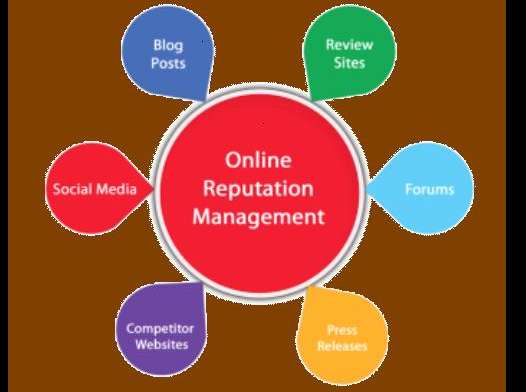The world of social media requires you to create content that resonates with your audience, but even the most well-intended and highest quality content can fall flat because of common, easily avoidable mistakes. This post will cover seven of the most common social media mistakes and explore strategies for avoiding them.
Lack of a Defined Social Media Strategy
Without a clear strategy, your social media efforts won’t have a clear purpose, so the results will be inconsistent. A well-defined social media strategy starts with identifying your objectives—whether it’s building brand awareness, generating leads, or increasing website traffic. Your strategy will serve as a roadmap that guides content creation, scheduling, and engagement tactics. Setting measurable goals and benchmarks also helps you gauge what’s working and where you need to make adjustments.
A plan that aligns with your brand values and audience needs keeps the storytelling cohesive across posts, so your users have a clear idea of your brand’s purpose. For example, if your goal is lead generation, your content should focus on creating posts that guide followers to your website or landing page. Regularly revisit and refine your strategy to adapt to shifting goals and audience preferences. Developing a focused strategy that aligns with your audience’s needs can help you achieve long-term success.
Inconsistent Posting Frequency
Ever notice that engagement is inconsistent when you post inconsistently? Social media thrives on regularity, and posting sporadically is a surefire way to lose audience interest. Inconsistent posting disrupts engagement patterns and affects visibility, since algorithms like accounts that maintain steady activity. Building a content calendar can help structure your content, so you’ll always have fresh updates ready.
Identify the best times for posting based on your audience’s habits, which can vary by platform. This will help you reach your followers when they’re most active, giving you more opportunities for interactions. However, remember to never sacrifice quality for quantity—each post should provide value to the viewer.
Not Engaging with Your Audience
Social media is more than a broadcasting platform; it’s a space for building connections. Many brands miss out by ignoring comments, direct messages, or mentions. Engagement goes far beyond just responding to comments; it also includes proactively interacting with your audience. For example, acknowledging shares or joining relevant conversations outside your profile can enhance your online presence and build loyalty.
Ignoring your audience can make your brand feel unapproachable and discourage future interactions. Engagement isn’t just about responding to questions—simple interactions like liking comments and replying with genuine enthusiasm can build a community. By prioritizing audience engagement on social media, you’ll increase loyalty and strengthen your online presence.
Poor Visual Quality in Posts
Visuals are the first thing users notice about your content, so they need to be high quality. Blurry images, inconsistent branding, or lackluster graphics can damage your brand’s professional image. High-quality visuals, on the other hand, make your content stand out, encouraging interaction and strengthening brand recognition. Take the time and invest the resources in creating high-quality visuals that are optimized for each platform’s specific dimensions and display features.
Consider using templates to keep a consistent aesthetic, and if possible, professional photography or design tools to boost visual appeal. For example, vibrant colors and clean layouts are effective in capturing attention on platforms like Instagram. Following practices for high-quality social media visuals can encourage greater engagement and make your posts that much better.
Overusing Hashtags or Using Irrelevant Ones
Hashtags are a powerful tool for expanding your reach, but only when you use them properly. Using too many hashtags, especially irrelevant ones, can make your posts appear spammy and reduce credibility. Each hashtag should serve a purpose, helping your content connect with a broader, relevant audience. For instance, researching trending hashtags related to your industry and limiting your selection to a few meaningful ones can help your post reach the right people.
When used correctly, hashtags increase reach by connecting your post with users who are searching for or following those tags. On Instagram, for example, five to ten targeted hashtags may work best, while Twitter might benefit from just one or two. Using hashtag strategies can make your content more visible without overwhelming your audience.
Ignoring Social Media Analytics
Analytics play a huge role in understanding what content is working with your audience. They let you see engagement patterns, follower demographics, and post performance, giving you data you can use to inform your decisions. In fact, not reviewing these metrics might cause you to miss opportunities for improvement and risk repeating content that doesn’t connect.
For example, if you’re aiming for higher engagement rates, focus on metrics like likes, comments, and shares. Alternatively, to drive traffic, measure click-through rates. Regularly reviewing your analytics allows you to adjust your approach, double down on successful content, and identify areas for improvement. Social media trends and audience preferences can change over time, so consistent analytics are incredibly valuable.
Focusing Only on Self-Promotion
While it’s natural to use social media to promote your products or services, being too overly promotional can drive followers away. People tend to engage more with brands that add value through educational, inspirational, or entertaining content. A good rule of thumb is the “80/20” approach: aim for 80% informative and value-driven content, with only 20% promotional content.
Create a mix of content to keep your audience interested. Share industry tips, fun facts, behind-the-scenes glimpses, or even customer stories alongside your promotional posts. For example, a brief post showcasing a team activity or customer testimonial adds a human touch to your brand. This approach builds trust, invites interaction, and supports conversion when you do post about your products or services.
Building a Successful Social Media Presence
Content failure on social media often stems from avoidable mistakes, whether it’s not understanding your audience, overlooking visual quality, or missing out on engagement. By focusing on these seven areas—strategy, consistency, engagement, visuals, hashtags, analytics, and content balance—you can create posts that connect with your audience and foster brand loyalty. Social media success requires ongoing assessment and adaptability, but with these strategies in place, your content will get more meaningful engagement and drive results.





